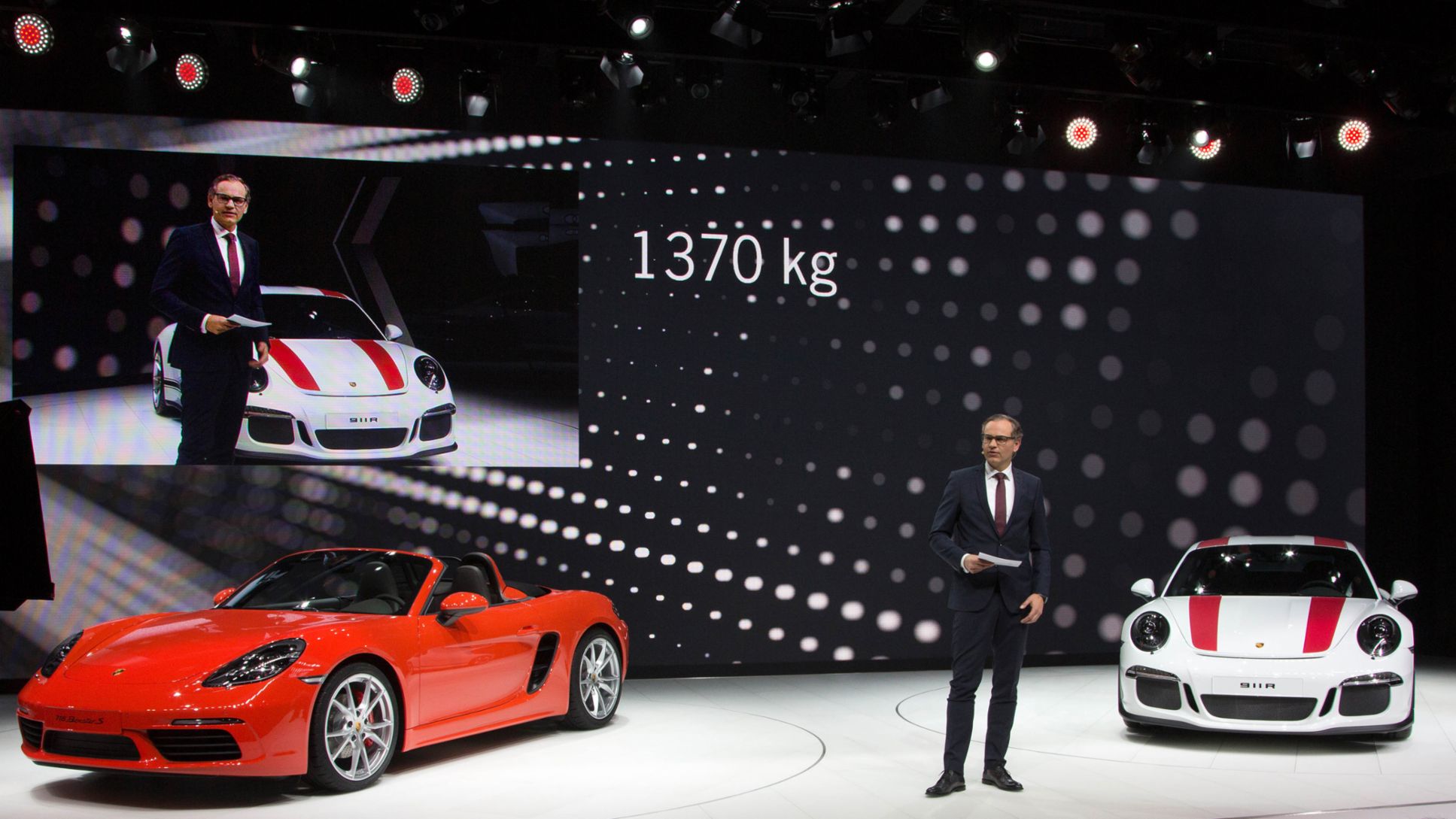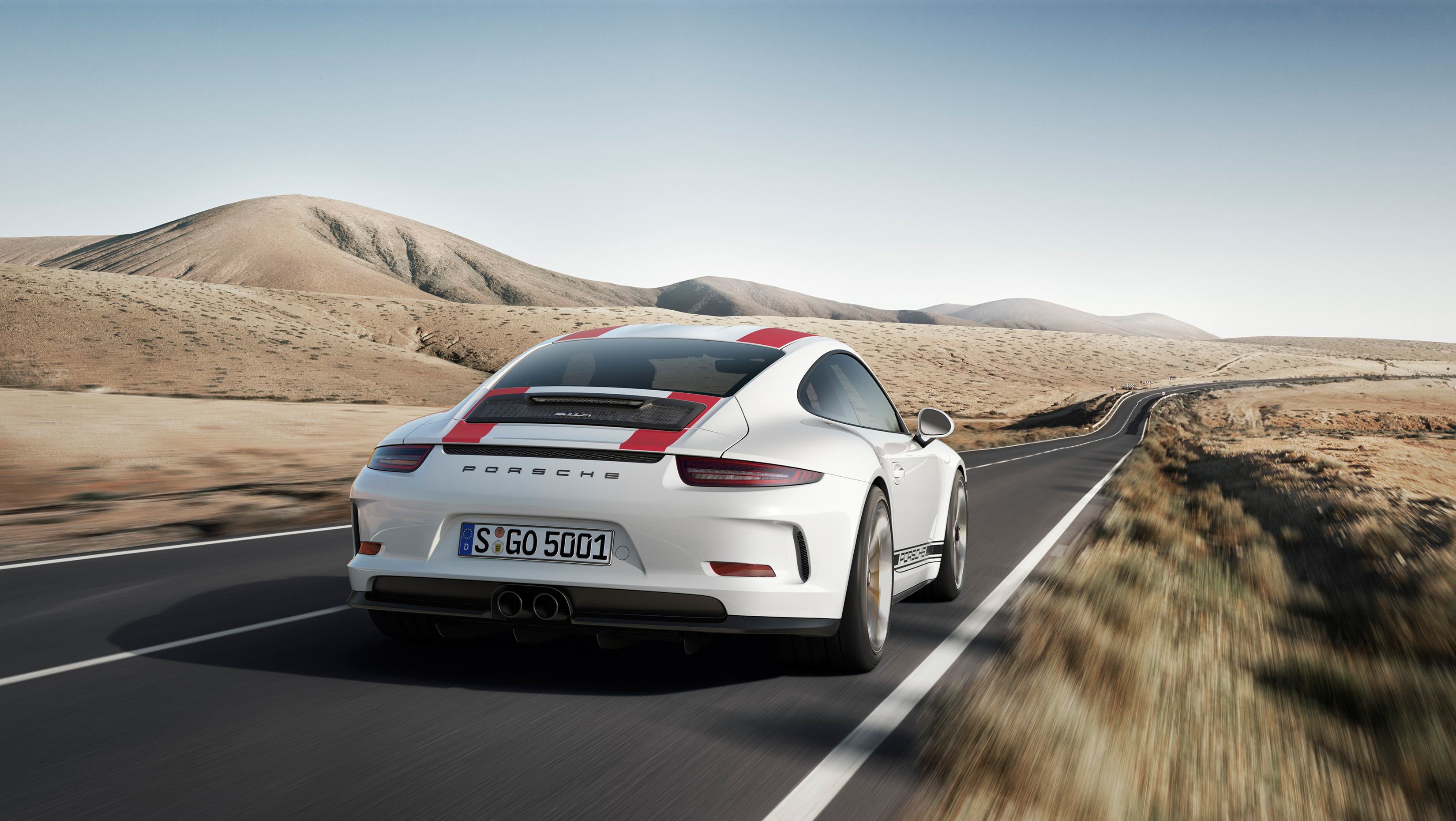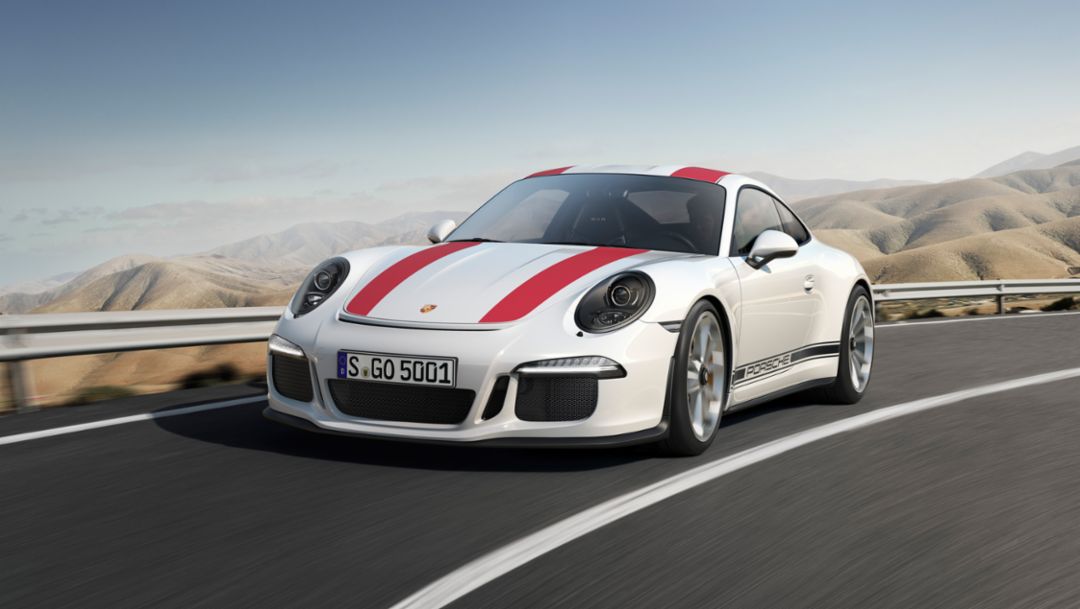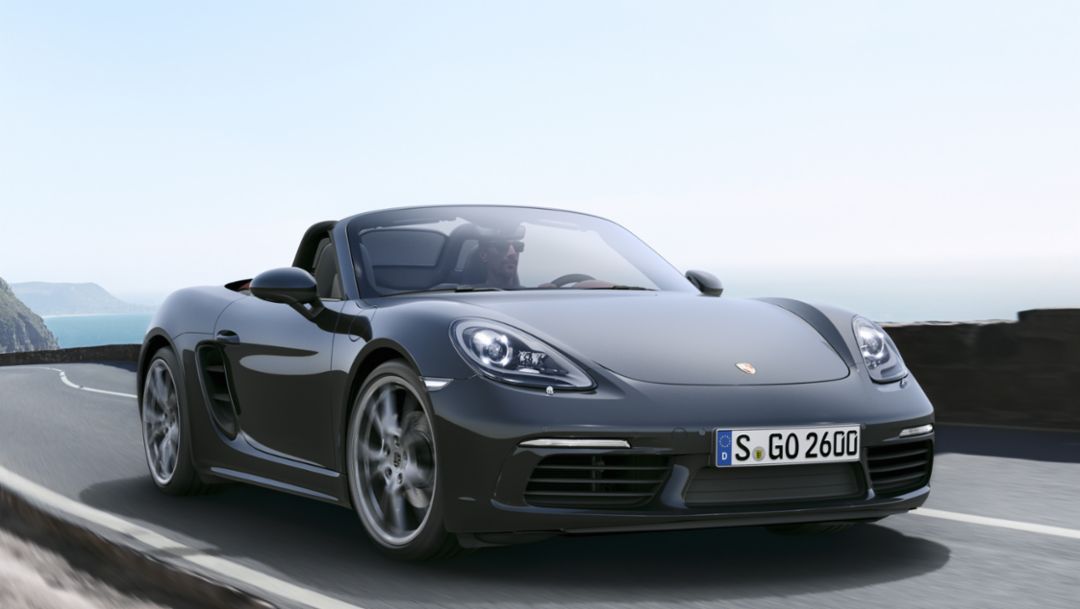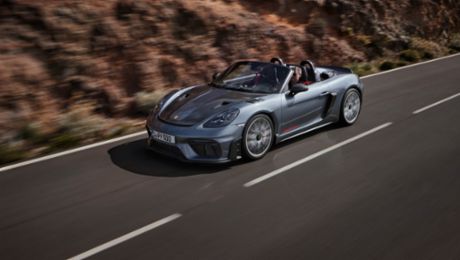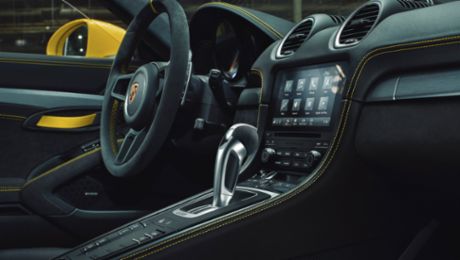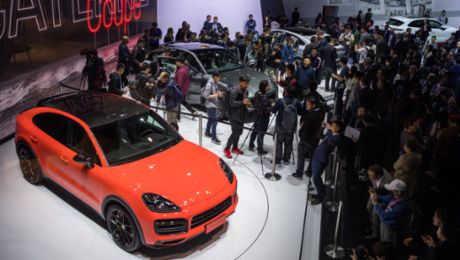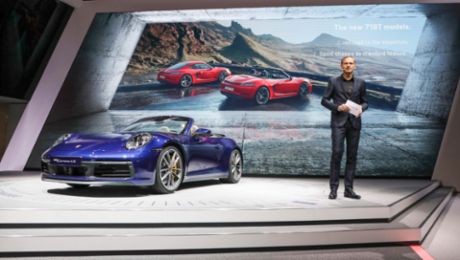Each model interprets the high art of lateral dynamics in its own way: the 911 R as a purist driving machine with a 368 kW (500 hp, 13.3 l/100 km; CO₂ emissions: 308 g/km) naturally aspirated engine in the rear, the Roadster with advanced chassis and turbocharged four-cylinder mid-mounted engine. The 718 Boxster develops 220 kW (300 hp, 7.4 – 6.9 l/100 km; CO2 emissions: 168 - 158 g/km) of power from two litres of engine displacement, while the 718 Boxster S attains 257 kW (350 hp, 8.1 – 7.3 l/100 km; CO2 emissions: 184 - 167 g/km) from 2.5 litres of displacement.
By presenting the 911 R, Porsche is staging an almost traditional opening to the European automobile year with an exceptional sports car. In previous years, the 911 GT3, 918 Spyder and 919 hybrid made their debuts in Geneva. The company is thus reaffirming its undiminished commitment to motor racing and sports cars linked to the world of motorsport.
R stands for Racing at Porsche. The appearance of the 911 R is therefore consistently sporty: the 368 kW (500 hp, combined fuel consumption 13.3 l/100 km; CO₂ emissions: 308 g/km) engine output is combined with a weight of only 1,370 kilograms. This makes the 911 R the lightest model in the current 911 range. Responsible for this is the advanced lightweight design with numerous carbon parts, magnesium roof and weight savings in the equipment. Combined with the exclusive use of six-speed manual transmission, the engine from motorsport delivers thrust in every conceivable situation.
911 R: Combined fuel consumption 13.3 l/100 km; CO₂ emissions: 308 g/km
In only 3.8 seconds, the 911 R breaks through the 100 km/h barrier, achieving a top speed of 323 km/h. In terms of driving dynamics, the 911 R with rear-axle steering, rear differential lock and PCCB ceramic brakes offers the best 911 equipment available. From the exterior, the 911 R gives a somewhat reserved impression. Characteristic details such as the rear body and nose familiar from the 911 GT3 as well as a special colour styling distinguish the high-performance sports car from a 911 Carrera. The product run of the 911 R is limited: only 991 models will be coming onto the road.
In its 718 Boxster, Porsche is deliberately revisiting the concept of the legendary 718 mid-engine sports car. With its lightweight construction, strong four-cylinder flat engine and precise chassis, it won numerous international races in the 1950s and 1960s. Today the four-cylinder power unit is water-cooled and turbocharged. From its two litres of displacement, the new machine in the 718 Boxster delivers 220 kW (300 hp, combined fuel consumption: 7.4 – 6.9 l/100 km; CO2 emissions: 168 - 158 g/km). The 718 Boxster S with a 2.5 litre four-cylinder engine takes this figure up to 257 kW (350 hp) thanks to its turbocharger with variable turbine geometry. Compared with previous Boxster models, this corresponds to an increase of 26 kW (35 hp) in each case.
Redesigned from scratch, the engines also impress with their efficiency: depending on the model and equipment, the consumption figures are up to 13 per cent lower than the respective predecessor models. The completely retuned chassis, more powerful brakes and not least the emotive tone are designed to convert the especially compelling power development into even more driving fun. The new model line has also undergone comprehensive further development in its design. Only luggage compartment lid, windscreen and convertible hood have been left unchanged.
Swiss market: new Porsche sales record in 2015
Switzerland has always been a classic Porsche country and one in which the company once again notched up a record year in 2015: with 3,822 vehicles delivered, sales rose by 33 per cent compared with 2014. The Macan continued to maintain its position as bestseller with 1,656 new vehicle registrations.
Swiss customers mainly prefer vehicles with all-wheel drive. This is also reflected in the results for the 911. Among the 941 models of this classic sports car sold, Coupé and Cabriolet of the 911 Carrera 4 GTS were particularly in demand in 2015. The Cayenne with 774 units sold also enjoyed a stable demand. This is a segment in which the Swiss display an open-minded approach to technology: almost one in five Cayenne models sold was a hybrid.
Consumption data
911 R: Combined fuel consumption 13.3 l/100 km; CO₂ emissions: 308 g/km
718 Boxster: Combined fuel consumption: 7.4 – 6.9 l/100 km; CO2 emissions: 168 - 158 g/km
911 GT3: Combined fuel consumption: 12,4 l/100 km; CO₂ emissions: 289 g/km
Cayenne S E-Hybrid: Combined fuel consumption: 3,4 l/100 km; CO₂ emissions: 79 g/km; Electricity consumption: 20.8 kWh/100 km
